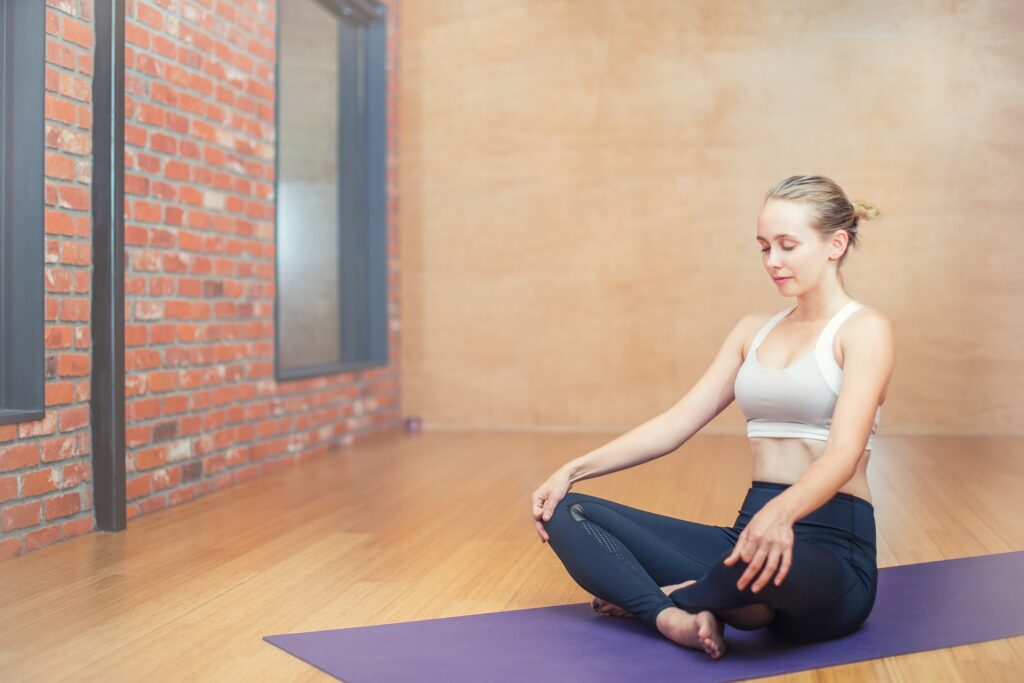
Introduction:
In our fast-paced world, it’s easy to get caught up in the hustle and bustle of daily life, often at the expense of our mental and physical well-being. However, incorporating mindfulness into our exercise routines can help us cultivate a deeper connection between mind and body, leading to greater awareness, presence, and overall health. In this article, we’ll explore the concept of mindfulness and its benefits for exercise, as well as practical strategies for integrating mindfulness into your workouts to enhance your fitness experience and maximize your results.
Understanding Mindfulness:
Mindfulness is the practice of paying attention to the present moment with openness, curiosity, and acceptance, without judgment or attachment. It involves tuning into our thoughts, feelings, bodily sensations, and surroundings with a sense of awareness and presence. Mindfulness originated from ancient contemplative traditions such as Buddhism but has gained widespread popularity in modern times as a secular practice with numerous health benefits.
Benefits of Mindfulness for Exercise:
Incorporating mindfulness into our exercise routines offers a wide range of benefits for both mental and physical health:
- Increased Focus and Concentration: Mindfulness helps sharpen our focus and concentration by training the mind to stay present and attentive to the task at hand. By cultivating awareness of our movements, breath, and sensations during exercise, we can enhance our performance and technique, leading to more effective workouts.
- Stress Reduction and Relaxation: Mindfulness practices such as deep breathing, body scanning, and progressive muscle relaxation can help reduce stress and promote relaxation before, during, and after exercise. By tuning into our bodies and releasing tension, we can experience greater ease and comfort during workouts, leading to a more enjoyable and rejuvenating experience.
- Enhanced Body Awareness: Mindfulness fosters greater body awareness, allowing us to tune into the signals and cues that our bodies send us during exercise. By listening to our bodies and honoring our physical limitations, we can avoid injury, prevent overtraining, and optimize our movement patterns for efficiency and safety.
- Improved Emotional Regulation: Mindfulness practices help regulate emotions by promoting a sense of calmness, balance, and equanimity. By cultivating acceptance and non-reactivity to challenging thoughts and emotions that may arise during exercise, we can maintain a positive mindset and persevere through difficult workouts with greater resilience and grace.
- Heightened Sensory Experience: Mindfulness heightens our sensory experience of exercise, allowing us to savor the sights, sounds, smells, and sensations of movement with greater appreciation and enjoyment. By immersing ourselves fully in the present moment, we can derive more pleasure and satisfaction from our workouts, leading to a deeper sense of fulfillment and well-being.
Practical Strategies for Integrating Mindfulness into Exercise:
Now that we understand the benefits of mindfulness for exercise, let’s explore some practical strategies for incorporating mindfulness into your workouts:
- Set an Intention: Before starting your workout, take a moment to set an intention or purpose for your practice. Whether it’s to cultivate strength, endurance, flexibility, or peace of mind, clarifying your intention can help focus your attention and guide your efforts throughout your workout.
- Practice Deep Breathing: Begin your workout with a few deep breaths to center yourself and calm your mind. Inhale deeply through your nose, filling your lungs with air, and exhale slowly through your mouth, releasing any tension or stress. Continue to breathe deeply and rhythmically throughout your workout to stay grounded and centered.
- Tune into Your Body: Pay attention to your body’s sensations, signals, and feedback during exercise. Notice how your muscles feel as they contract and release, the rhythm of your breath as it flows in and out of your body, and any areas of tension or discomfort that may arise. Allow yourself to move with awareness and sensitivity, honoring your body’s needs and limitations.
- Practice Mindful Movement: Approach your workouts with a sense of mindfulness and intentionality, moving with purpose and awareness. Whether you’re lifting weights, running, practicing yoga, or engaging in any other form of exercise, focus on each movement with full attention and presence. Notice the quality of your movements, the alignment of your body, and the sensations that arise with each repetition or pose.
- Cultivate Gratitude and Appreciation: Take a moment to express gratitude for your body and its ability to move, strengthen, and adapt. Appreciate the opportunity to engage in physical activity and nourish your body with movement, knowing that each workout is an opportunity for growth, transformation, and self-care.
Conclusion:
Mindfulness and exercise are powerful allies in promoting holistic health and well-being, fostering a deeper connection between mind and body. By incorporating mindfulness practices into your workouts, you can enhance your focus, reduce stress, improve body awareness, regulate emotions, and enhance your overall fitness experience. Whether you’re lifting weights, running, practicing yoga, or engaging in any other form of exercise, approach each workout with mindfulness and intentionality, and savor the present moment with gratitude and appreciation. Remember that mindfulness is not just a practice but a way of being, both on and off the mat, helping you live with greater awareness, presence, and vitality.







